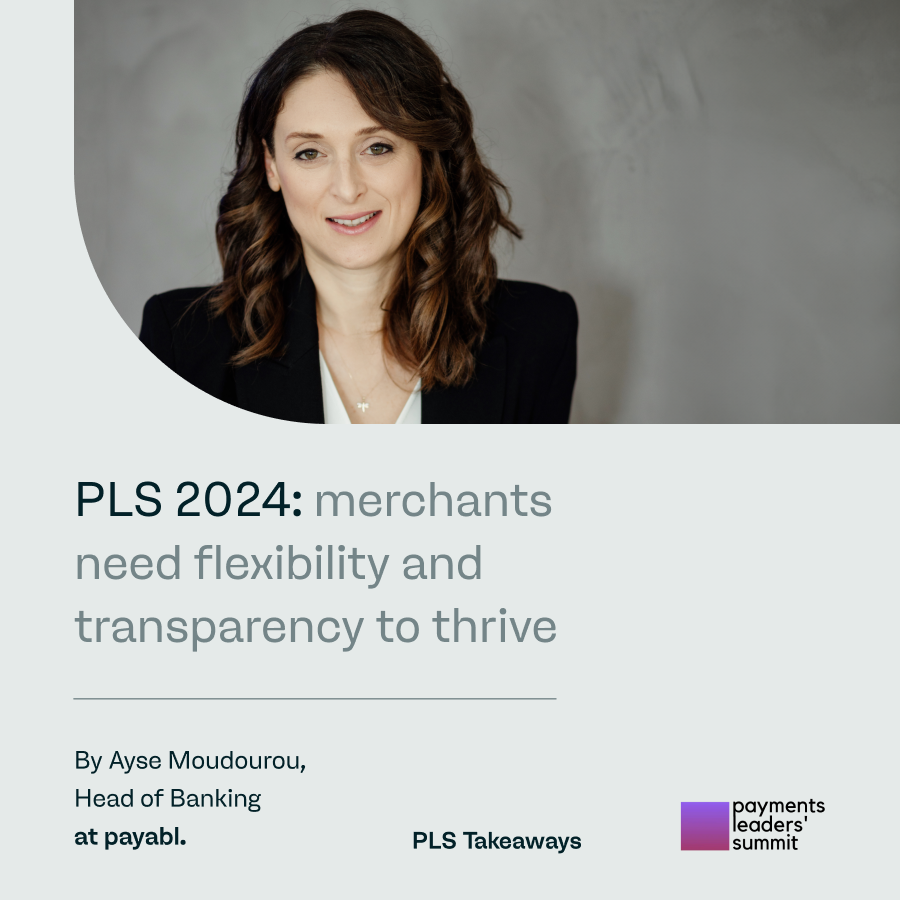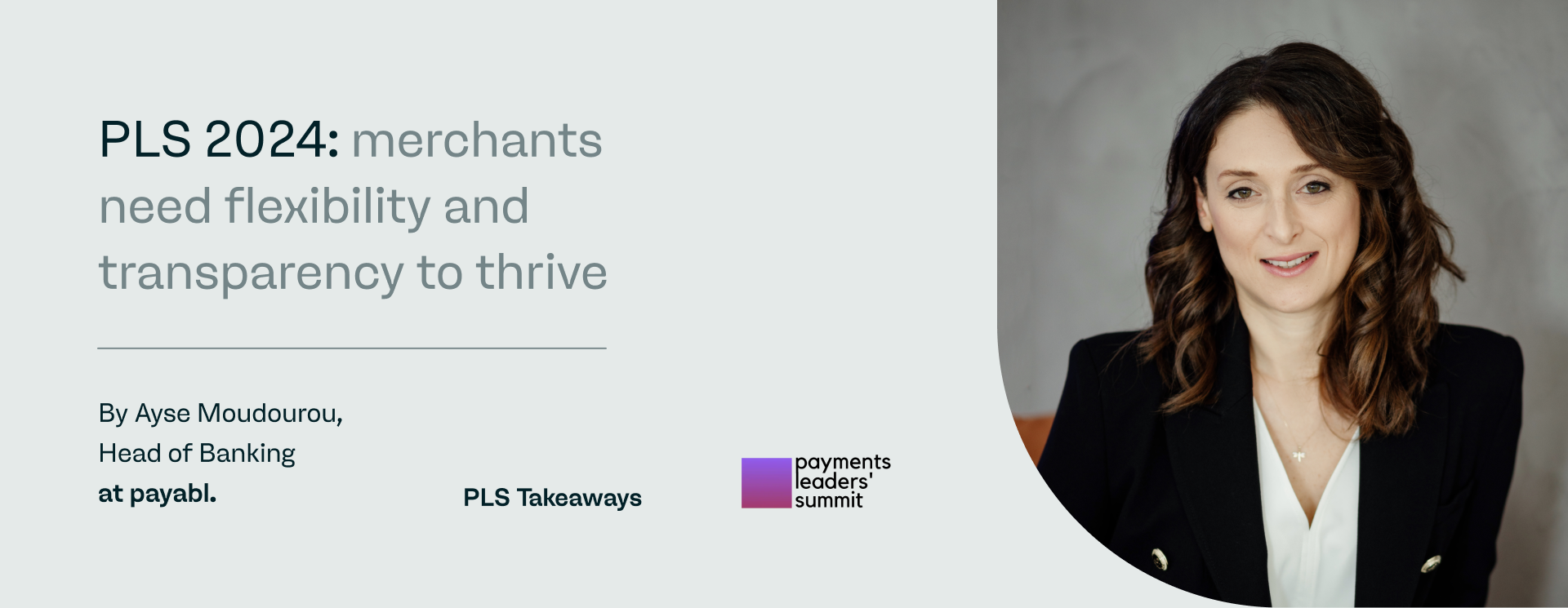
As I reflect on the recent Payments Leaders Summit (PLS) in Amsterdam, one thing became abundantly clear: merchants today are no longer content with one-size-fits-all solutions. From conversations with industry leaders and the broader discussions at PLS, it's evident that merchants are seeking more flexible, transparent payment systems that can adapt to their unique needs. Here are the top trends shaping the future of payments, from my perspective as Head of Banking at payabl.
The multi-provider approach – mitigating risk and boosting flexibility
One of the most important takeaways from PLS was the shift in how merchants view payment providers. Rather than relying on a single acquirer, many are now moving towards a multi-provider approach to mitigate risk, add more payment options, and improve operational flexibility.
Merchants are eager to increase their knowledge of payment acceptance, and they’re looking for providers who can offer more than just a single solution. We’ve seen firsthand how a multi-provider approach helps merchants diversify their risk, giving them greater control over their payment ecosystems and access to a wider range of options.
Data visualisation and transparency are essential
Merchants are no longer satisfied with vague or inaccessible payment data. They want clear, real-time visibility into their transactions – success rates, coverage, and, most importantly, reasons for failed transactions. This transparency isn’t just a ‘nice-to-have’; it’s becoming a competitive differentiator.
At PLS, merchants voiced their need for better data visualisation tools, allowing them to pinpoint inefficiencies and improve payment acceptance–we’re committed to providing this transparency, giving merchants the data they need to make informed decisions and improve their overall performance.
Local acquirers are key for success in niche markets
For merchants expanding into smaller, niche markets, local acquirers are proving to be invaluable partners. International acquirers can struggle to meet the technical and regulatory demands of these regions, while local acquirers often have the infrastructure and knowledge needed to streamline operations and improve success rates.
We’ve seen this in our own work at payabl., where we help merchants tap into local payment ecosystems, offering them smoother cross-border transactions and reduced fees. This approach not only improves transaction success rates but also enhances the overall customer experience.
Smooth checkout experiences are a must
At PLS, one theme dominated nearly every conversation: the importance of a frictionless checkout experience. Merchants are laser-focused on providing fast, seamless payment options for their customers, knowing that a poor checkout experience can directly impact their revenue.
Alternative payment methods, such as digital wallets and BNPL, are playing a significant role in meeting these customer expectations. We see this as an advantage for our work, since we’re always looking at ways to help merchants offer a variety of payment methods, ensuring that their customers can complete transactions quickly and without hassle.
The role of traditional banks and fintechs in the payments ecosystem
It was also fascinating to see how traditional banks and fintechs are increasingly working together. While traditional banks remain cautious, there’s a growing recognition that fintechs bring the agility and innovation needed to tackle modern payment challenges.
During the event, we managed to establish new connections for future collaborations with reputable banks.
Shaping the future of payments
The Payments Leaders Summit 2024 highlighted the ever-evolving nature of the payments industry. As merchants continue to navigate new challenges, one thing is clear: flexibility and transparency are essential for success. Whether it's adopting a multi-provider approach, improving data visualisation, or expanding into niche markets with local acquirers, merchants are seeking partners who can help them stay competitive in a rapidly changing landscape.
